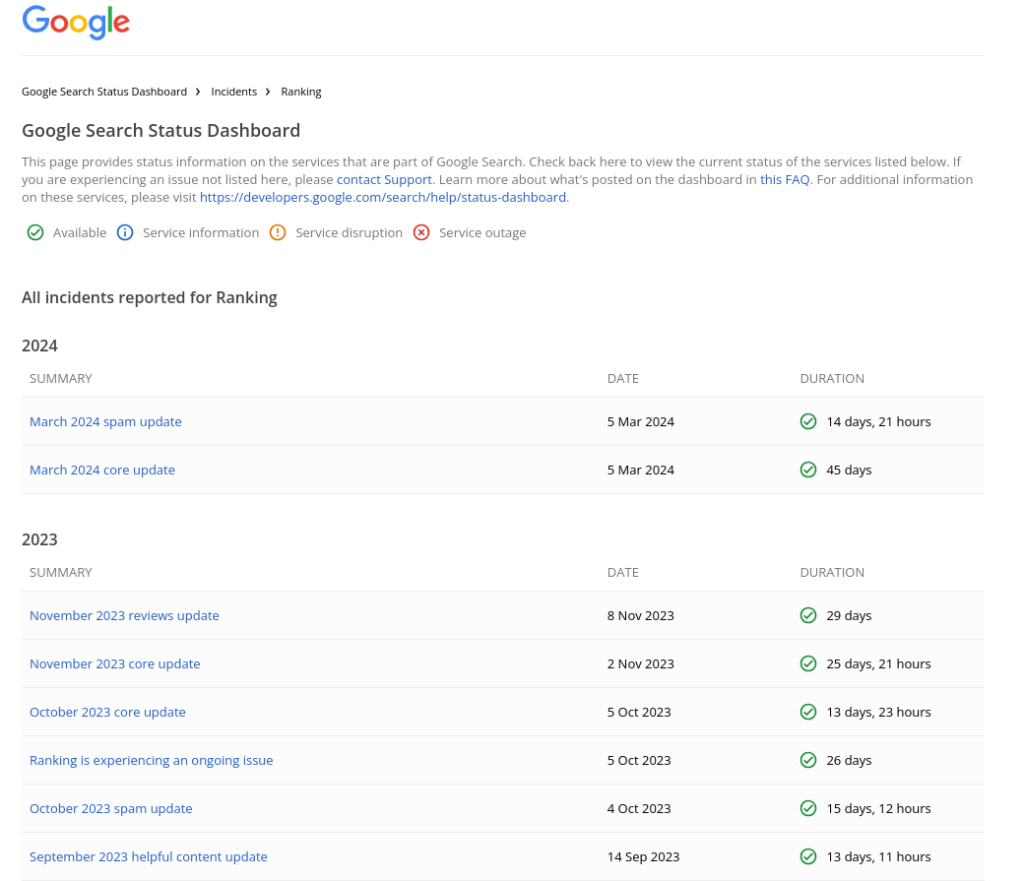As a digital marketer, have you ever noticed that traffic to your website or other platforms have declined even though you’ve consistently published new content?
You pour your heart and soul into creating a piece you’re proud of, only to realize its success is fleeting. Whilst results are rolling in, your website’s traffic is surging, and conversions are happening, the livelihood and relevance of your content is also reaching its inevitable end.
Content decay is certainly every digital marketer’s worst nightmare. As your content ages, its SEO value may diminish as well if not regularly updated or optimised according to current search algorithms.
This immediately puts you at the bottom of the pile, overshadowed by newer, more optimised content that captures the attention of search engines and audiences alike.
Simply put, your content is now an artifact, a product of its time that’s no longer relevant to the masses.
However, don’t lose faith just yet. Your content can still be salvaged and re-rank if its decay is recognized early on and steps are taken to mitigate it.
What is content decay?
Every time you publish a new piece of content, search engines crawl it and after some time, it may start ranking for specific search terms. However, just like most trends that come and go, your content experiences a similar ebb and flow.

Similar to the human life cycle, digital content experiences a natural progression of growth, peak performance, and eventual decline.
Hence, this necessitates ongoing care and adaptation to ensure your content is able to maintain its vitality and relevance.
What causes content decay?
Several factors contribute to content decay. These include:
Search engine algorithm update
Search engines like Google often undergo updates to better understand a user’s intent and to deliver more relevant search results.
Sometimes an algorithm update may alter the importance of certain ranking factors and content that previously performed well may see a tank in visibility if it doesn’t align with the search engine’s updated criteria.
The good news is that Google is relatively transparent about major algorithm updates.

To further keep track of Google search engine updates and algorithm changes, here’s a list of various tools and resources you can access:
Increased competition
As more content on similar topics is published, search engines have more options to choose from when determining which content to display in top search results.
With a larger pool of content to choose from, search engines may also raise the quality standards for ranking content. This means that higher quality content that offers more comprehensive information, a better user experience, or stronger authority, may be favored.
What’s more, with the digital sphere becoming increasingly saturated, competitors may invest more resources in optimizing their content for search engines. This includes improving on-page SEO, building higher quality backlinks, alongside improving a range of other engagement metrics.
This makes it challenging for your existing content to maintain visibility and rankings if you don’t keep track of your competitors latest moves.
Keyword relevance
Do you notice that over time the words you choose to utilize have differed significantly? Depending on who you are and which part of the world you’re in, your choice of words can vary significantly.
If your content does not align with the search intent behind specific keywords, users may not find it useful or relevant. Search engines consider user behavior metrics such as bounce rate and dwell time when ranking content, so content that is irrelevant to a user’s search intent will experience a decay in visibility.
Likewise, search engines increasingly consider the content and meaning of keywords rather than exact keyword matches. Content that lacks semantic relevance to target keywords may experience decay in visibility as search engines favor content that’s more contextually relevant.
Outdated information
It is an undeniable fact that users are more likely to trust content that is up-to-date and accurate. Content that is outdated no longer addresses the needs and interests of a targeted audience will no longer have any relevance.
For instance, statistics and specific references may have changed over time, and can frustrate users looking for up-to-date content.
Content that fails to adapt to new realities risks becoming obsolete even if parts of it are still accurate. This in turn leads to diminished engagement and visibility in organic search results.
Technical issues
Issues such as broken links, server errors, or faulty redirects can hinder search engines from properly crawling and indexing website content.
Other technical issues such as indexing problems, slow page speeds, structured data errors, and security vulnerabilities can lead to a significant decrease in organic traffic, thus impacting the content on your site.
How to recognize content decay?
There are a number of ways to spot existing content decay that may signal that your content is moving out of its peak stage into a gradual decay. Some of the more telling signs include:
- URLs experience a sustained decline in traffic over time
- A decline in conversion rates for content-specific goals
- A decrease in engagement metrics (e.g., bounce rate, time on page, pages per session)
- Technical issues (e.g., broken links, site errors, mobile usability issues)
- Lower search engine rankings
Tracking organic traffic and engagement will give good insight into your content’s rate of relevance or decay. However, if your content maintains a steady click rate but loss of impressions, that means your content may not be as relevant or compelling enough, leading to a lack of engagement.
There are a number of tools you can use to identify content decay such as:
This allows you to track website traffic over time, even to the most minuscule of details such as the number of sessions, pageviews, and users.

This will provide you with up-to-date data on organic search engine performance, enabling you to see page level insights including impressions, clicks, CTRs, and average position in search results.

- SEMrush
SEMrush’s content audit tool can help you evaluate the performance of individual pieces of content based on metrics such as traffics, backlinks, and social shares.
The site audit tool has the ability to scan websites for technical SEO issues, including broken links, crawl errors, and duplicate content.

How can you fix decaying content?
You may be focused on ideating and churning out new content but before doing so, it might be best to fix your old content first.
Here are a few best practices to consider:
Update/refresh content
Your main goal should be to only assess the performance of pieces you care about. This means, you should either update outdated content or get rid of it.
If relevant to your piece, you can add new insights, examples, or multimedia elements to give it a new look and modern relevance. However, if your cause is no longer relevant to the article at hand, it’s best to prune it.
For instance, if you’re an e-commerce site, remove pages that no longer have a particular service or product up for offer.
With pieces you want to keep, optimise them for target keywords based on current search trends and user intent.
Consolidate/repurpose content
This involves combining several individual pieces into a single piece that’s more comprehensive. A larger, more thorough piece can signal to search engines that it is a well-researched and highly authoritative account of a particular query.
This may be a little more time consuming as you’d want to make sure that content isn’t repeated and that your internal links and backlinks to your individual pieces are updated to your new, consolidated ones.
You could also consider repurposing your content into different formats such as videos or info graphics to increase its appeal and reach new audiences.
Improve user experience
Consider your page’s readability, load times, links, and images. Organize your content into clear sections, use search-engine optimised headings, and incorporate more visual elements.
Most users look up content on their mobile devices these days so make sure your content is mobile-friendly to guarantee a smooth user experience.
Get new internal links and backlinks
You might want to consider interlinking your pages. This can help search engines understand your website’s structure and type of content being posted.
If relevant, back link to external sources to increase your site’s credibility. Reach out to industry professionals and reputable websites to request for backlinks.
By regularly auditing your content, you may identify new opportunities for both internal linking and backlinking.
Create new content
Keen on attracting fresh traffic? Just create new content. Search engines are known to favor fresh content. This immediately improves the search rankings for your site which will indirectly benefit older content.
However, this should only be done once you’ve updated or pruned your decaying content.
